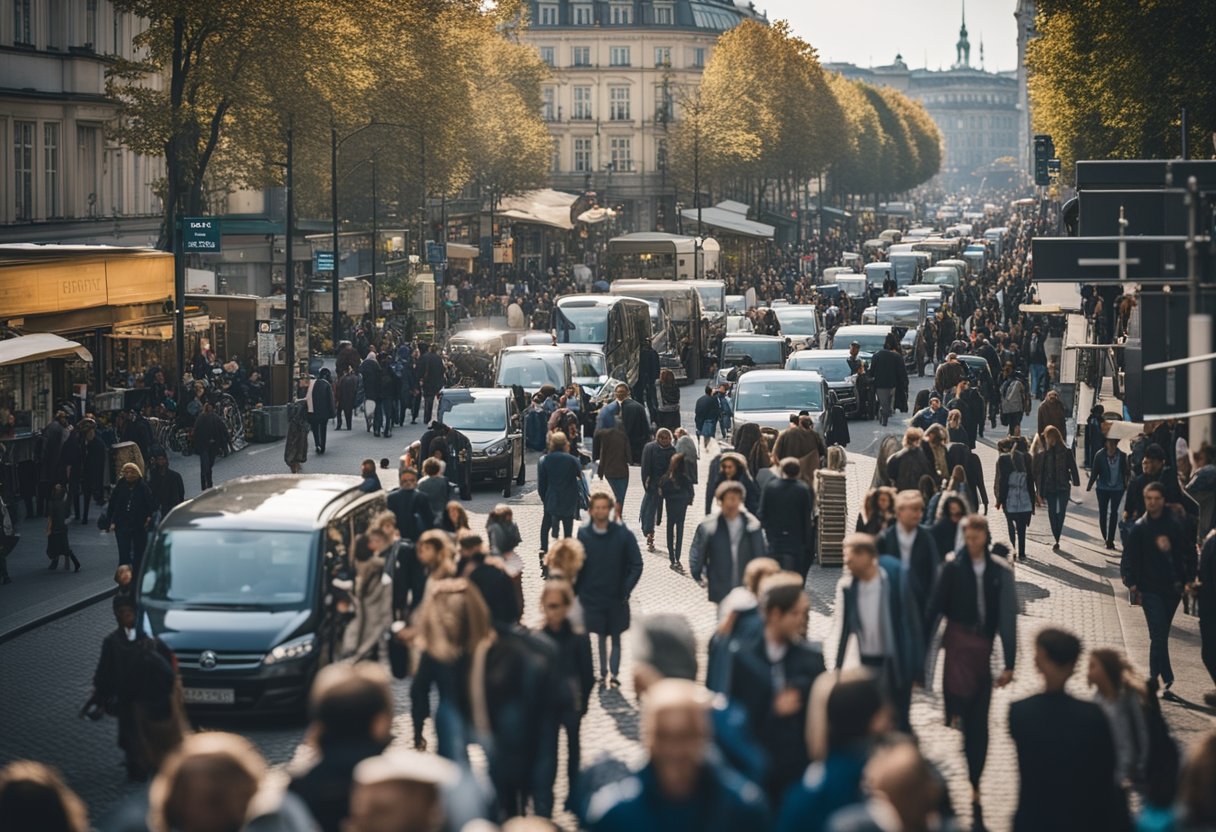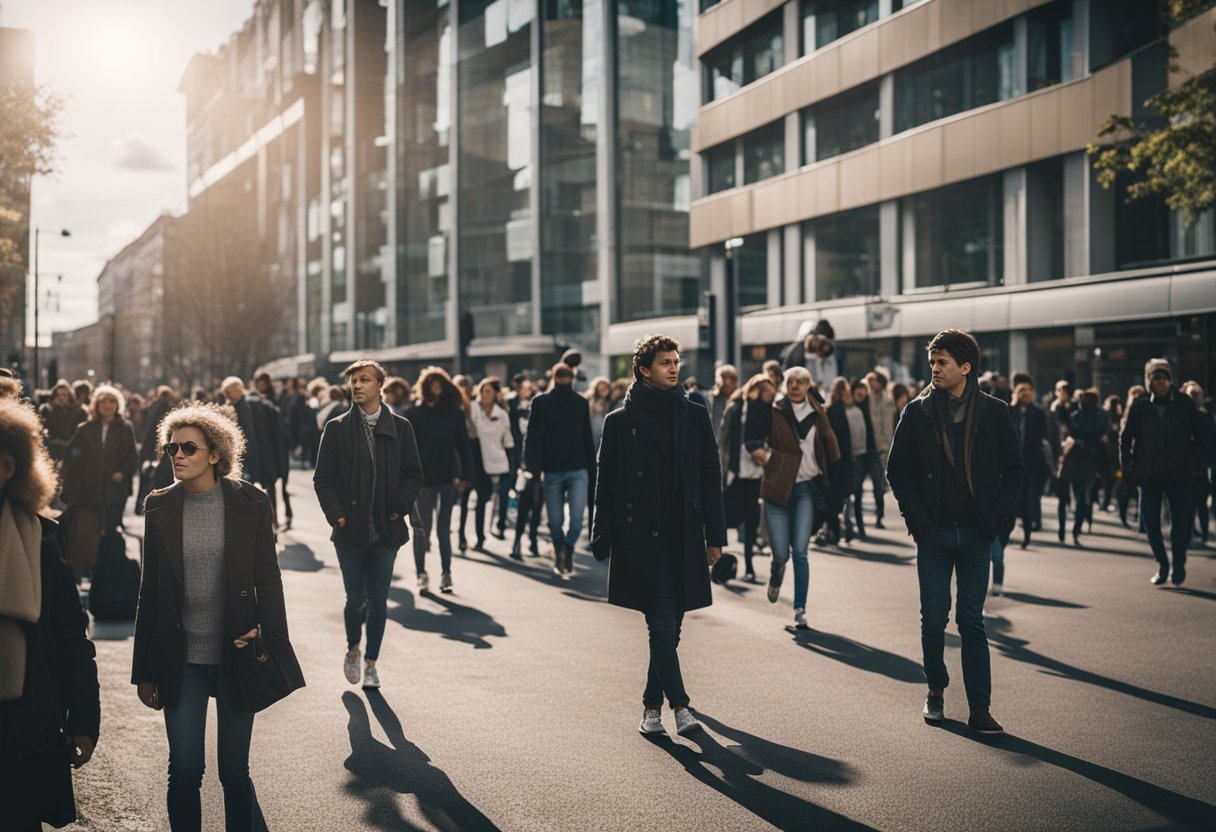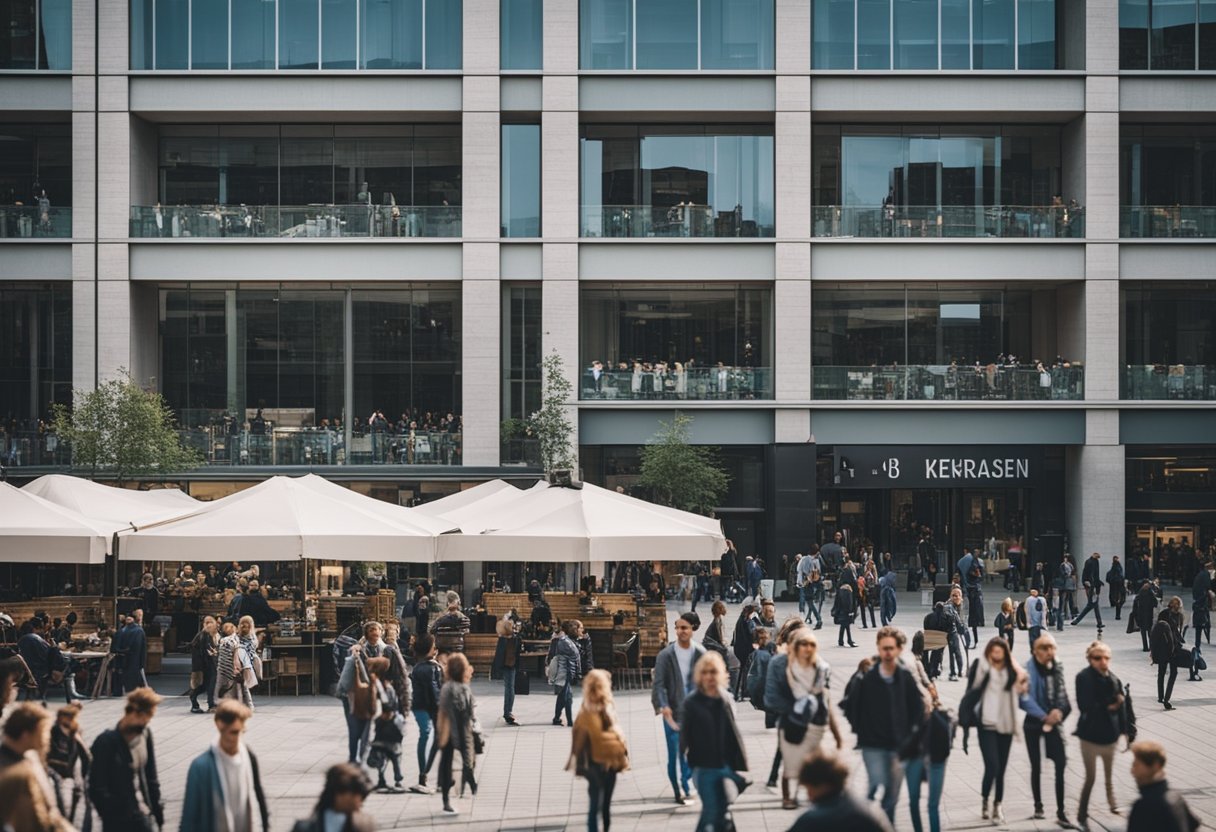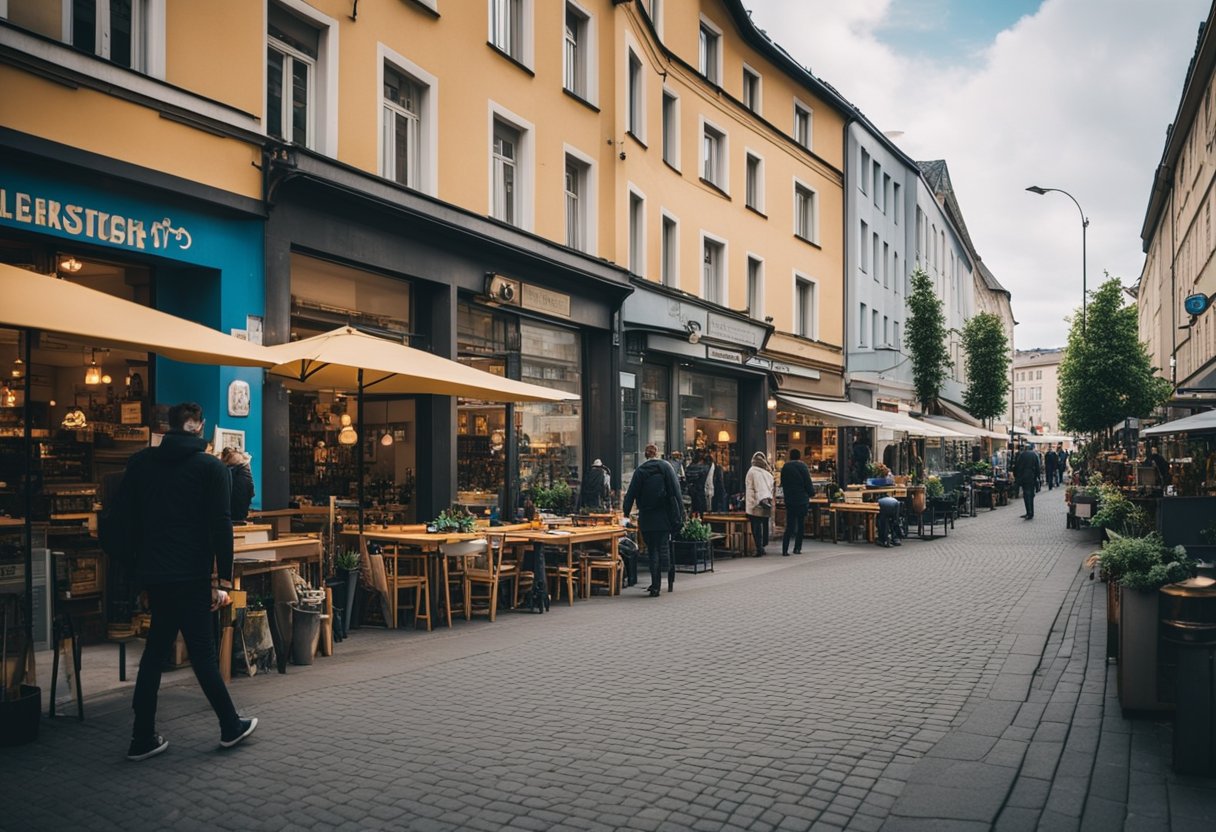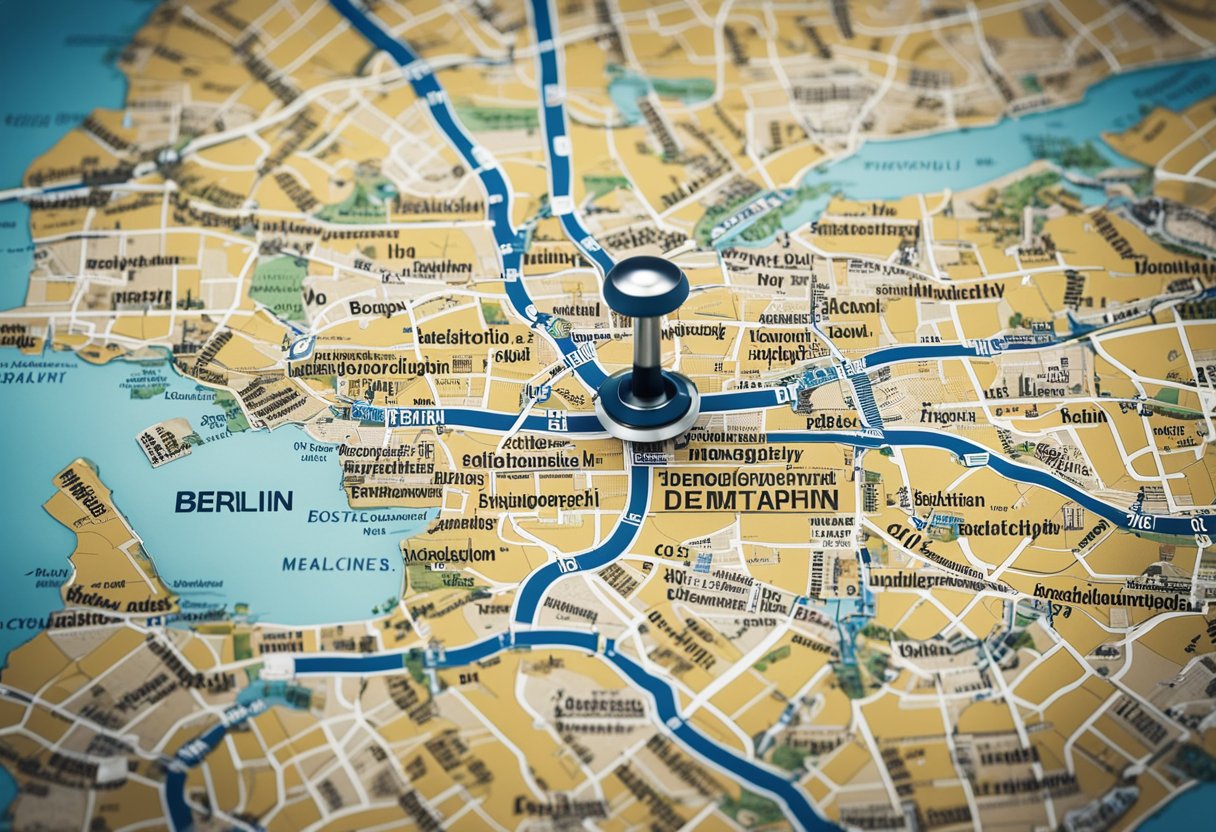Berlin, Germany stands as a beacon of diversity within Europe, reflecting a rich tapestry of cultural identities.
As the capital and largest city of Germany, Berlin also operates as a city-state, playing a crucial role in the political and cultural landscape of the country. Its unique position as an urban agglomeration influences its demographic composition, seeing a mix of ethnicities, languages, and traditions.
In recent years, Berlin has become particularly known for its dynamic and varied demographic profile, which is diverse not only in terms of ethnicity but also in age, lifestyle, and socioeconomic status.
The population statistics of Berlin have shown a dynamic pattern over the years. As of 2022, the city’s inhabitants numbered over 3.5 million people, making it the most populous city in Germany.
The Berlin demographics data reveals that the growth has been steady, with slight fluctuations.
This upward trend in population reflects Berlin’s status as a hub for migration, attracting individuals both from across Germany and around the world, thereby continually reshaping the city’s demographic landscape. This growth contributes to the city’s reputation as a vibrant and ever-changing metropolis.
Ethnically, Berlin is a mosaic of different backgrounds which adds to its charm and complexity. A significant portion of its residents come from various nationalities, making the city a cosmopolitan hub.
Among the ethnic groups, the Turkish community stands as one of the largest minority populations, alongside people from Arab countries, Poland, and the former Soviet Union, among others.
This ethnic diversity is a testament to Berlin’s historical openness and modern-day status as a city that both respects tradition and embraces change, making it a unique place to live and visit.
Historical Population Changes – Berlin Demographics
The demographic landscape of Berlin has experienced significant alterations over the centuries, influenced by political, social, and economic events.
Population Development
Berlin has seen fluctuating population numbers since the late 19th century. The Greater Berlin Act in 1920 was a pivotal point that caused a spike in the city’s population as it incorporated many surrounding communities, considerably expanding its reach.
Historical development of Berlin’s population charts demonstrate a dramatic increase during this period.
Migration Patterns
Migration has played a crucial role in shaping Berlin’s demographic profile. After World War II, West Germany, including West Berlin, witnessed a wave of immigrants, particularly from Turkey, contributing to a diverse ethnic makeup.
Meanwhile, East Germany experienced a more controlled migration policy until the fall of the Berlin Wall. Berlin Demographics reflect the city’s varied cultural composition as a result of these migratory flows.
Effects of World War II
World War II had a profound impact on Berlin’s population. The city found itself at the forefront of military advances and geopolitical changes, leading to a significant loss of life and displacement of people.
In the post-war period, Berlin, partitioned between the Allies and the Soviet Union, saw its population dynamics shift, as did the areas of Prussia and Brandenburg within the war’s context.
Berlin Wall Impact
The construction of the Berlin Wall in 1961 not only divided the city physically but also demographically, creating distinct populations in East and West Berlin.
The wall’s fall in 1989 initiated a new chapter of population integration and growth rate adjustments. This event marked the beginning of a gradual process of reunification that affected the population development of the Federal Republic and the former German Democratic Republic.
Population Trends and Berlin Demographics show Berlin’s continued growth and reunification since the Wall’s demise.
Current Berlin Demographics
Berlin, the capital city of Germany, has continuously evolved in its demographic landscape, with recent years showing significant changes in population estimates and age distribution.
Population Estimates
As of 2022, Berlin’s estimated population reached approximately 3.5 million people, according to reports from World Population Review. This makes it not only the second-most populous city proper in Germany but also a major urban area within the European Union.
The city experienced population growth as observed in a census conducted, reflecting an increase compared to the previous year, 2021, when the population was slightly lower.
Population Density: Berlin is known for a relatively high population density, particularly due to its status as an urban region in northeastern Germany along the River Spree.
Age Distribution
To exhibits a youthful Berlin demographics profile with a diverse age distribution. The information gathered from various demographic statistics indicates the presence of multiple age groups within the city’s population structure.
- 0-17 years: 16.8%
- 18-64 years: 64%
- 65+ years: 19.2%
The age groups proportion suggests a working-age majority, along with a non-negligible representation of both younger and older age brackets.
Diversity: Reflecting on its rich history and global connections, Berlin demographics also encompass a wide variety of ethnic backgrounds, with a considerable portion of the population having an immigrant background. This has contributed to the multicultural fabric of the city, where different cultures and ethnicities come together.
Composition of Residents
Berlin’s demographic landscape is multifaceted, with a rich composition of residents varying in nationality, country of birth, and age. The city not only serves as a hub for German citizens but also as a home for a vast community of international inhabitants.
Citizenship and Nationality
Berlin is notable for its international population, including substantial numbers of foreign nationals. Among the largest groups are individuals from Turkey (104,556), Poland (40,988), and Serbia (19,230). Other significant communities come from countries like Italy, Russia, the United States, France, Vietnam, Croatia, Bosnia and Herzegovina, the UK, Greece, Austria, Ukraine, and Lebanon.
Country of Birth
The city’s demographic makeup extends beyond citizenship, with many residents born outside of Germany. The presence of those born in Vietnam, Turkey, and Poland is reflective of Berlin’s diverse ethnic landscape.
Gender and Age Group Breakdown
Berlin has a dynamic age structure with those aged 30 to under 35 forming the largest age group. The gender distribution in Berlin is well balanced, fostering an inclusive environment for all residents.
Cultural and Ethnic Diversity
Berlin’s demographic landscape is marked by a rich tapestry of cultures and ethnic backgrounds, bolstering its reputation as a vibrant and cosmopolitan city.
Religious Affiliations
Berlin is home to an array of religious communities, reflecting its diverse population. The two dominant religious groups are Protestants and Roman Catholics, rooted in Germany’s historical Christian traditions. In addition, the city not only hosts a significant number of followers from various Christian denominations but also a variety of other religious groups, each contributing to the cultural fabric of Berlin.
Immigrant Communities
Berlin’s population includes a substantial proportion of residents with immigrant backgrounds, originating from within the European Union and beyond. Countries like Turkey, Poland, and Russia have notable representation in the city’s demographic data. Further populations from France, the United States, and a variety of other nations add to the city’s ethnic diversity. The population of Berlin as of 2022 had grown significantly, indicating the city’s ongoing appeal as a destination for international communities.
Statistical Regions
In Berlin, statistical regions are well defined, providing detailed demographic data that is vital for understanding the city’s composition and trends.
Administrative Divisions
Berlin is divided into several boroughs, each with a distinct set of localities that further detail the city’s statistical regions. Boroughs like Kreuzberg, Charlottenburg, and Spandau offer a glimpse into the city’s diverse demographic fabric. The administrative division extends to localities such as Friedrichshain and Helllersdorf, which are integral to understanding demographic distribution.
Significant population changes are evident when reviewing data from various censuses and statistical records. For instance, the population census of 2011-05-09 provided a snapshot of Berlin demographics at the time, which have continued to evolve.
Berlin’s history of migration has resulted in a melting pot of cultures, including French Huguenot refugees, as well as populations from Pomerania, Saxony, and other regions. Each commune or locality, down to places like Müggelheim, Rahnsdorf, and Schmöckwitz, contribute to the overall demographic landscape of the city.
In 2021, Berlin’s population was captured, and in 2022, subsequent data indicated fluctuations. These figures are crucial in tracking the growth and changes within the city. Among the surrounding localities, Blankenfelde and Buch show the adaptability and continuous development of Berlin’s statistical regions.
Economic Indicators
Berlin’s economy is characterized by a vibrant and diverse demographic profile, reflecting both the city’s historical significance and contemporary appeal. The capital’s economic landscape is informed largely by the growth in its population and the associated increase in workforce and infrastructural developments.
Population and Workforce
Berlin’s population has experienced a notable increase, with the city witnessing growth by approximately 77,800 residents in 2022. This surge in population is indicative of Berlin’s attractiveness as a place to live and work, bolstering the city’s workforce and contributing to a bustling economy. The capital’s workforce is a driving factor behind its economic recovery, particularly after the disruptive events such as the pandemic in 2020.
Related Services and Infrastructure
To support the growing population, Berlin’s services and infrastructure have expanded, including advancements in public transport, healthcare, and education sectors. The city is home to nearly 200,000 students, underscoring the demand for strong educational services. Moreover, the diversity of Berlin’s population, with a rich ethnic makeup, enriches the city’s cultural tapestry and drives the development of numerous services tailored to meet the needs of its varied residents. This diversity is also reflected in the cosmopolitan array of services available in sectors like cuisine, retail, and entertainment, which contribute to the city’s overall economic health.
Frequently Asked Questions
The demographic landscape of Berlin is reflective of its dynamic history and current global role. Here, we address some of the most pressing inquiries related to the city’s demographic profile.
What is the population of Berlin in the latest census data?
According to the most recent census, Berlin’s population has experienced a growth, with around 77,800 more residents living in Berlin last year compared to the previous year.
How has the population of Berlin changed in recent years?
Berlin’s population grew by 2.1 percent in 2022 compared with the year before, indicating a continuing trend of population increase in the city.
What are the age demographics of Berlin’s population?
The biggest age group in Berlin comprises those between 30 to under 35 years old, revealing a relatively young population in the city.
What is the population density of Berlin?
Berlin has a varied population density across its different boroughs, with some areas like Kreuzberg being particularly densely populated.
How ethnically diverse is the city of Berlin?
Berlin has a rich history of migration, contributing to its significant ethnic diversity. The city has been a destination for migrants for centuries, with recent years seeing a continued trend of growing diversity.
What percentage of Berlin’s population does the Asian community comprise?
The exact percentage of Berlin’s population that the Asian community comprises is part of the broader context of the city’s ethnic composition, reflecting its status as a multicultural metropolis.
